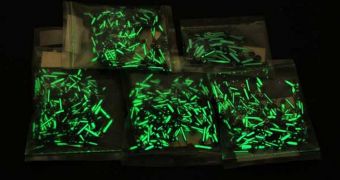Concentrations of the known carcinogen radium – a naturally-occurring, radioactive chemical – in aquifers exceeds limits deemed safe by the Environmental Protection Agency (EPA) throughout the eastern seaboard of the United States, as well as in central regions of the country.
The shocking discovery was made by investigators at the US Geological Survey (USGS), who say that detecting this element is very difficult. Methods employed by non-professionals cannot readily distinguish radium, and the substance leaves no discernible smell or taste behind.
Aquifers are extremely important to the general population, since this is where most of the drinking water comes from. Contaminations in large aquifers are taken extremely serious, since cleaning the water up is a very complex process.
USGS experts analyzed radium concentrations in waters across the United States. For the most part, these amounts were found to be within limits, except for the regions presented in this diagram.
The affected areas displayed concentrations that either equaled, or surpassed, those recommended by EPA for safe drinking water. Arkansas, Illinois, Indiana, Iowa, Michigan, Minnesota, Montana, and Wisconsin were found to be affected by radium contamination.
These states lie above the Mid-Continent and Ozark Plateau Cambro-Ordovician aquifer systems, the USGS team reports. On the eastern seaboard, areas located above the North Atlantic Coastal Plain aquifer system were also affected.
These regions include portions of Virginia, Delaware, Maryland, New York, New Jersey and North Carolina. According to experts, radium naturally permeates soils, water, and rocks, but never at levels that could qualify as contamination.
“Radium is a troubling contaminant in groundwater because it cannot be readily detected by taste or smell, nor are the analytical methods for measurement easily applied by non-experts,” explains Marcia McNutt, the director of the Survey.
“This is the first nationwide study to identify geochemical factors present in many aquifers, such as low dissolved oxygen or low pH, that make groundwater more susceptible to radium contamination,” USGS hydrologist Jeffrey Fischer explains. He is also a coauthor of the new study.
“These simple geochemistry measurements are good indicators of where radium is likely to exceed a standard and can help managers and the EPA anticipate areas where radium may be elevated,” Fischer explains.
Details of the study appear in a paper entitled “Occurrence and Geochemistry of Radium in Water from Principal Drinking-Water Aquifers of the United States,” which is published in the latest issue of the journal Applied Geochemistry.

 14 DAY TRIAL //
14 DAY TRIAL //